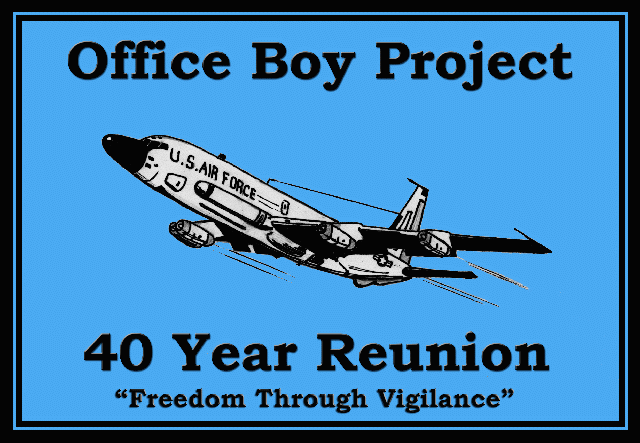
|
San Antonio, TX
Sept. 26, 2003
|
(The above aircraft drawing was done by A1C Gerald WH Ching, an airborne maintenance man at the 6985th RSM.)
On September 26, 2003 a group of airmen who had flown together 40 years earlier got together in San Antonio, Texas. These men were the first men to fly on the brand new RC-135 reconnaissance platform in 1963-64. The code name for the new outfit, when it was being formed, was "Project Office Boy." Captain Doyle E. Larson was chosen to be the first squadron commander of the new outfit. Obviously someone made a good choice because Captain Larson went on to command the whole Electronic Security Command of which Project Office Boy was part. Captain Larson ultimately retired from the Air Force as a Major General and is recognized today as one of the outstanding leaders of the Air Intelligence business.
In 1962, when Project Office Boy was being planned the intelligence business of the United States Air Force was called the United States Air Force Security Service. The name was changed on August 1, 1979 to the Electronic Security Command. Later the name was changed to the Air Force Intelligence Command and still later the name was changed to what it is known by today, the Air Intelligence Agency.
The men who flew the aircraft on these reconnaissance missions were members of the Strategic Air Command. They were the pilots, co-pilots and electronic warfare officers on the missions. SAC took the men out and brought them back home. Major General Larson and Major General Paul Martin co-sponsored the 40th Anniversary of Project OFFICE BOY with the able assistance of Gary Belcher. Members from both Commands enjoyed a dinner together on the evening of September 26, 2003.
Likewise the wives of many of the men present also attended this reunion because, after all, they, too, served. Some of the wives probably learned things about the business of aerial reconnaissance during the Cold War, for the first time or, at least, previously told information was confirmed by others present.
This reunion truly was a celebration of brotherhood of men who had made history by being the very first ones to fly on the RC-135 reconnaissance platform. And even more than that there was the sense of having survived some very dangerous and necessary missions during a time when the United States and the Soviet Union sometimes stood toe to toe in what could have been a nuclear holocaust.
"From this day to the ending of the world, but we in it shall be remember'd; we few, we happy few, we band of brothers."
- From Shakespeare's Henry V"
Photos by Airlee and Brad Owens

